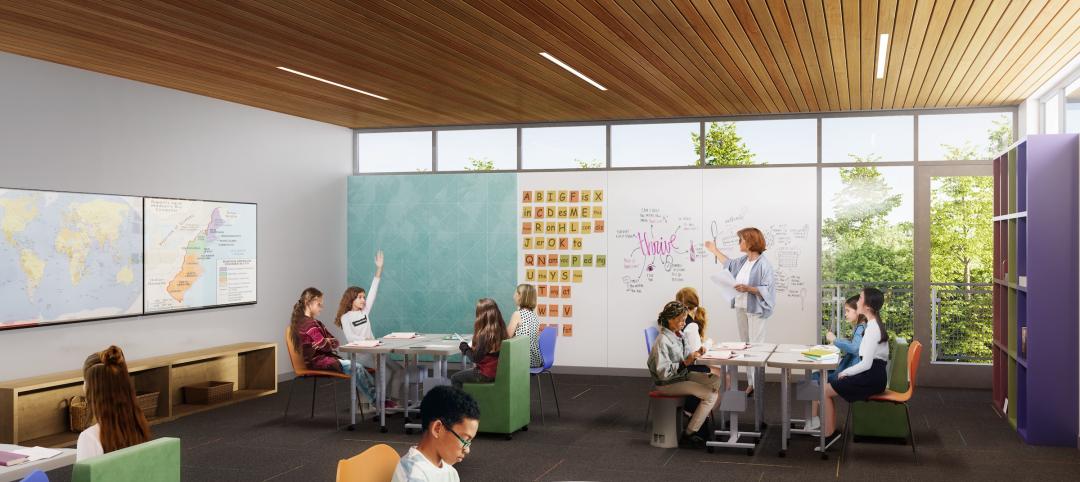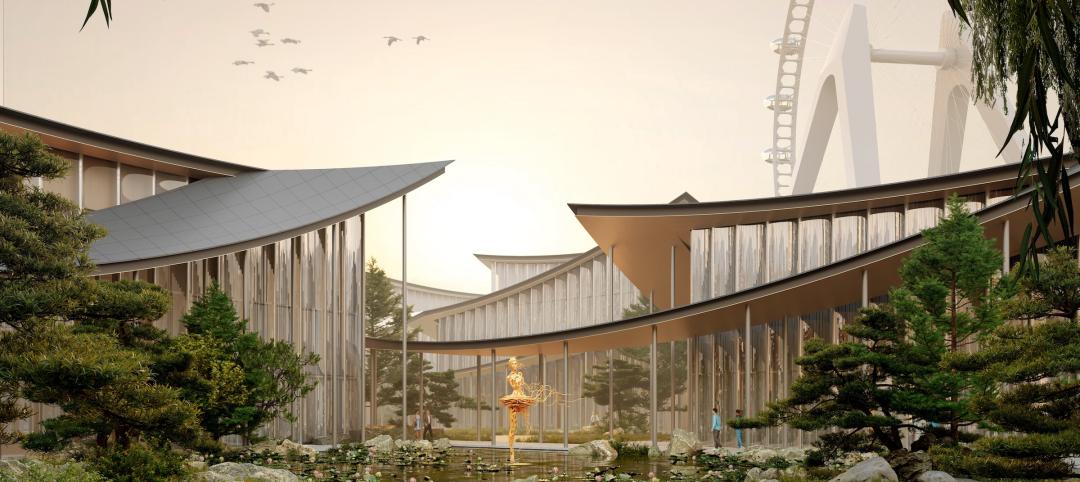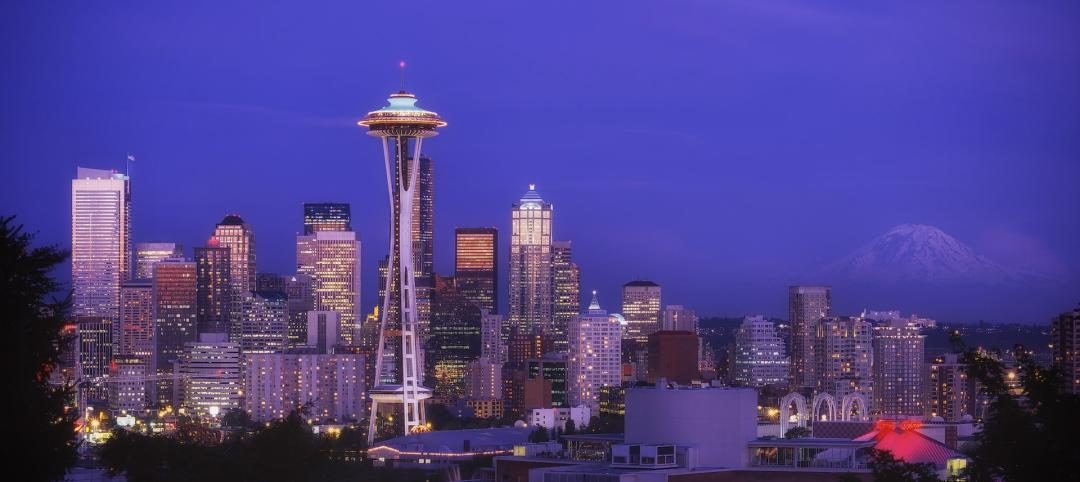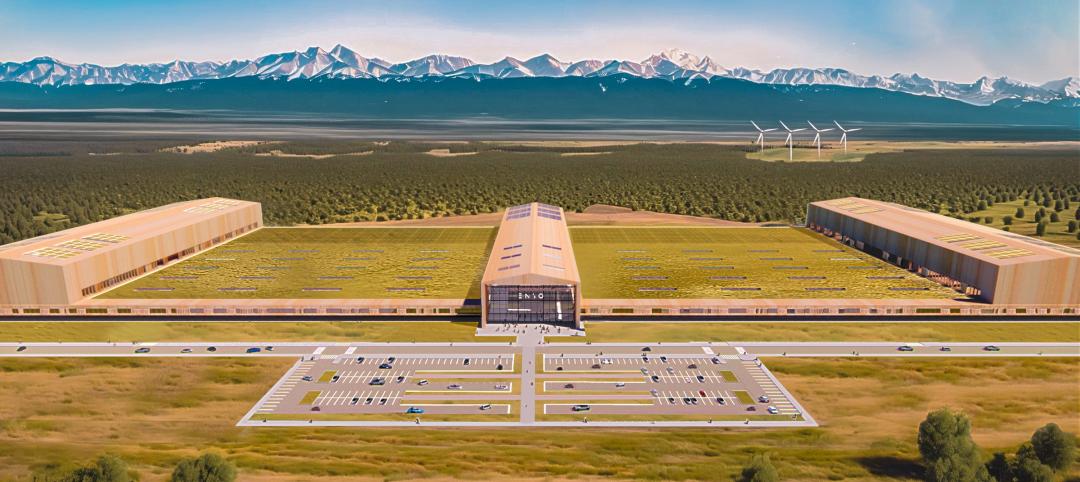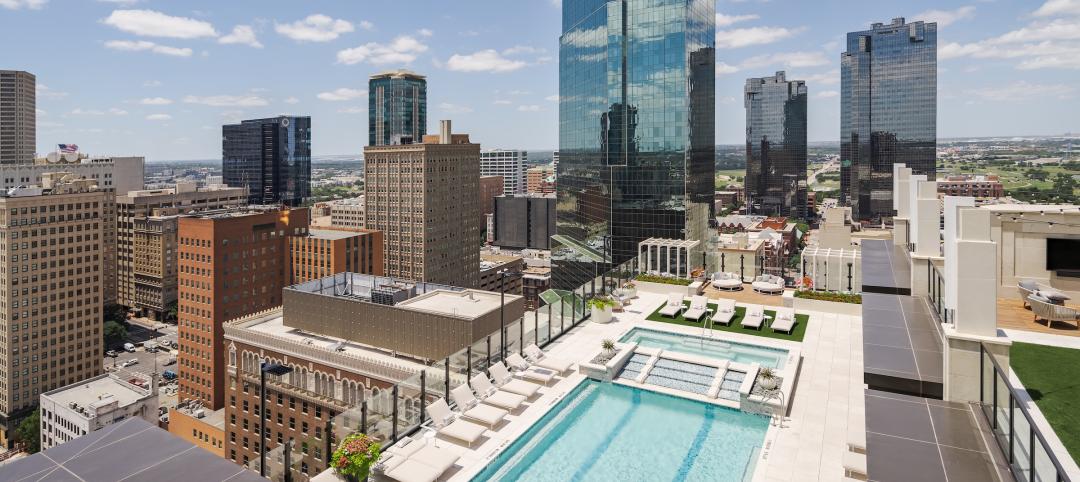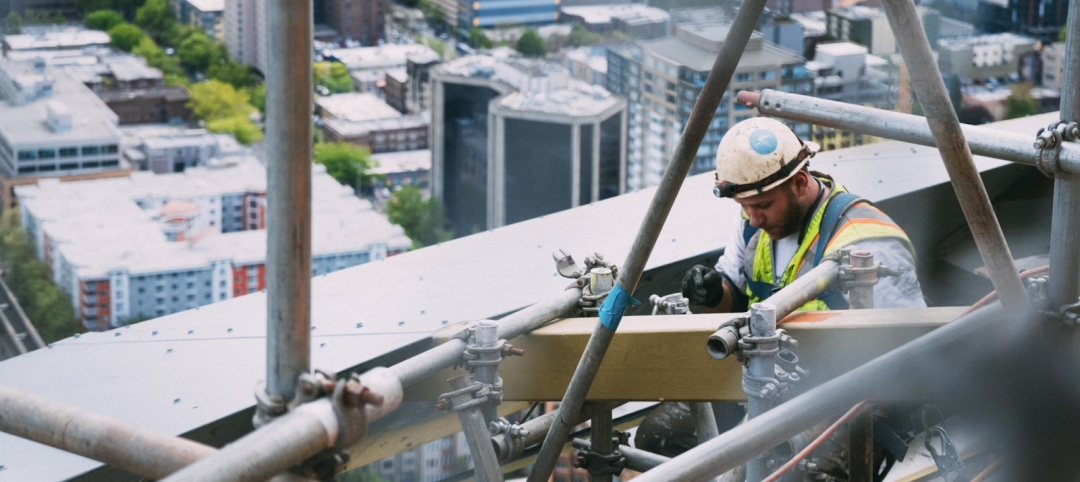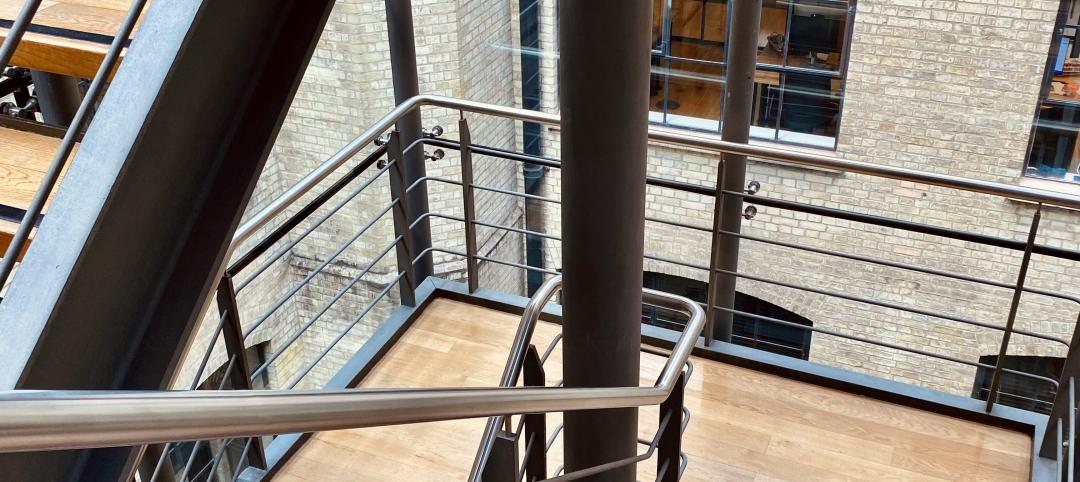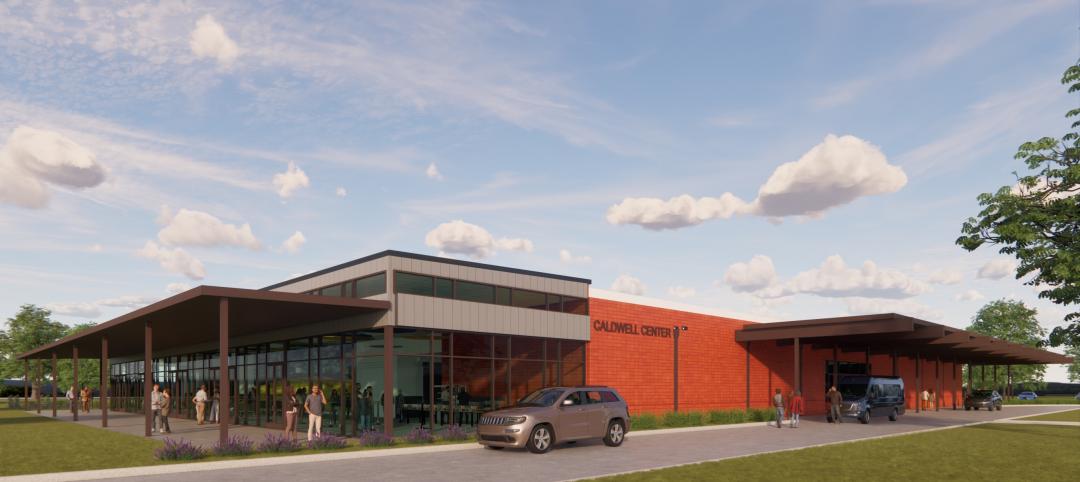Office design has always been linked to productivity—how many workers can be reasonably squeezed into a given space—but why isn’t it more frequently linked to creativity?
“In general, I don’t think enough people link the design of space to business outcome,” says Janice Linster, partner with the Minneapolis design firm Studio Hive. “Encounters and activities that happen in creative spaces outside a structured environment are important and can spark ideas that can make a project more successful.”
If office design and business outcome are so closely linked, why aren’t more office environments designed to influence and inspire creativity?
According to Linster, it’s because a lot of people approach creative office design incorrectly: “It isn’t about a creative desk or a creative conference room or bright paint. It’s about the whole experience of being in this workplace and thinking through every step of a daily routine.”
BD+C interviewed several leading architects about offices that they designed to support and influence creativity. Perhaps the special features they worked into their designs will serve as a source of inspiration for your next office project.
Architect: Johnson Chou
Project: Grip Limited
 The "hot tub" conversation pit seats 10 and is designed to inspire Grip Limited's employees and disarm its clients. The beer tap on the adjacent countertop is a nod to the firm's beer clients. Photos: Tom Arban Photography |
For years, beer paid the bills at Grip Limited, a Toronto-based advertising agency known for creating memorable campaigns for such clients as Labatt Breweries of Canada and InBev, whose many beer brands include Bass, Beck’s, and St. Pauli Girl. The ad firm’s partners, however, worried they were being typecast as “beer guys” when they wanted to be seen as a sophisticated agency that’s versatile enough to land blue-chip clients and still enjoy success with their bread-and-butter beer accounts.
A new image required new ideas, so Grip’s partners hired architect Johnson Chou, principal at his eponymous Toronto design firm, to create an office that would inspire creativity on the part of their staff. “The environment itself had to be inspiring, and to be inspiring and creative, you have to have experiences,” says Chou, who transformed 21,500 sf of unfinished downtown office space into the agency’s new creative studio, complete with a bright orange slide, a fire pole, and a “hot tub” conversation pit with an adjacent beer tap (Labatt is still a key client).
The firm’s three-story office space, completed for under $2 million in May 2006, has succeeded in inspiring Grip’s nearly 100 employees to think differently and creatively—and successfully pushed the firm’s image forward in the corporate world. Grip Limited’s client roster now includes automakers Honda and Acura, as well as pharmaceutical giant GlaxoSmithKline. You can’t get more blue chip than that.
 For those who find stairs too pedestrian, Grip Limited has a slide and a fire pole, which do get used, according to architect Johnson Chou. Versatile seating for impromptu conversations includes contoured window seats and an upholstered fire pole landing-even bleachers (left, next to staircase). The atrium's white walls double as projection screens. |
How architect Johnson Chou’s design for Grip Limited’s office influences creativity:
1. Inspire but don’t distract. The Grip office has a slide and a fire pole connecting the main two floors, but they don’t distract from the work environment because they’re located in the entry atrium. “I wanted to create a sense of energy and I wanted the space itself to be inspiring, but obviously I wasn’t going to have a hot tub conversation pit in a quiet area,” says Chou. “You have to strike a balance and put things where they belong.”
Chou also made sure to reduce distractions in the open workstation areas by enclosing nearby meeting spaces. “You have to respect the people around you, and collaboration space in private areas just can’t be as open,” says Chou. Of course a little noise is perfectly acceptable in such environments because it signifies the hum of excitement and creativity.
2. Inventive collaboration spaces. Creative thinkers often work in teams and are inspired by one another, so Chou included a mix of collaboration and meeting spaces that allow formal, informal, and spontaneous encounters. “There are meeting areas everywhere,” says Chou. They include a formal boardroom called “The Fridge” (the room’s outer walls are clad in stainless steel and its inner walls in white synthetic grass to suggest frost); multiple small meeting rooms (with the same white synthetic grass) are called “Ice Cubes.”
The 10-person hot tub conversation pit is often used to inspire—and disarm—the firm’s clients. The atrium circulation space has versatile soft seating to encourage employees to stop for ad hoc conversations. Presentations are given in the atrium, whose white walls double as a projection screen; permanent bleacher seating can accommodate the entire staff.
3. Let the client’s clients serve as inspiration. “If you’re concerned about being creative and imbuing that on your clients, you have to be very conscious of image,” says Chou. “Use ideas they already have and reinterpret them into the space. Be inspired by the client’s work.”
Thus, Grip’s reception desk is clad in black rubber, a nod to the firm’s automotive clients. The fridge and frost motifs are nods to beer clients. The slide’s orange color is borrowed from the Grip Limited logo. “Details are what’s really important to the creative environment, and it’s what always gets lost because of budget issues or burnout on a project,” says Chou. “But it’s the details that inspire people the most.”
|
Architect: Sasaki Associates
Project: Monitor Group
Sasaki Associates, based in Watertown, Mass., recently completed offices for two different clients who had a similar request: Give us office spaces that would inspire creativity in employees and collaboration among colleagues.
Sasaki’s design for the new 100-person San Francisco office of Monitor Group, a business consulting firm, encompassed 28,374 sf in an SOM-designed high-rise, but the firm’s insistence on an all-private office environment (a company recruiting strategy: prospective hires are told they will get a shared office rather than a cubicle) proved nettlesome to the design team.
How Sasaki Associates’ design for Monitor Group’s office influences creativity:
1. The piazza and the sandbox. “Insight often comes to employees when they get out of their office, go to another space, and interact with colleagues,” says Cathy Bell, principal at Sasaki Associates. The piazza and sandbox are those spaces. Bell designed a floor plan consisting of a grid of cross streets intersected by a diagonal main street, with the elliptical piazza sitting at one end and the sandbox on the other.
The piazza serves as the hub of the office, part coffee bar, part library, part meeting area, and part mailroom. (With square footage at such a premium, many offices can’t afford to have single-purpose lunchrooms, so spaces are evolving into these types of multipurpose centers.) “There are lots of things that make people have to go there, so it’s the perfect creative space because it allows impromptu interactions,” says Bell. However, Bell advises against going overboard with such spaces. “You don’t want too many because the whole point is to provide chances to run into someone you wouldn’t ordinarily run into,” she says. “If there are too many, you might never run into them.”
The sandbox, a touchdown space just off the lobby, is designed mostly for interaction with clients. Several meeting rooms connect to this space, which also has a computer alcove and a library niche displaying publications authored by Monitor Group employees.
2. Main Street. Hallways are great spaces for spontaneous interactions, and architects at Sasaki originally thought that employees would reap the benefits of wide hallways. Wrong! “We found that wide hallways allowed employees to ignore each other as they passed,” says Bell. For the Monitor Group’s main street, Bell designed an alcove to encourage people to step our of the foot traffic and talk or sit down together.
3. Cockpits. Maintaining privacy while cutting down on distracting noise can be a huge problem in offices with open elements—even those with private offices—so Bell designed small 80-sf enclosed spaces called cockpits, which are scattered throughout the office for employees who need short-term privacy and isolation from noise.
 The large piazza is the hub of Monitor Group's San Francisco offices, the mixed-use space serves as the lunchroom ( a full kitchen is out of view behind the coffee bar), a meeting area, a library, and the mailroom. Photo: Robert Benson |
Architect: Hixson Architecture, Engineering, and Interiors
Project: Ethicon Endo-Surgery
The 17,954-sf Ethicon Endo-Surgery research and development center in Cincinnati, Ohio, was designed by local firm Hixson Architecture, Engineering, and Interiors to be a place where out-of-the-box thinkers could create new medical devices free from the confines of the firm’s corporate headquarters.
Purposely located about a mile from the company’s main offices, this converted warehouse space was conceived of as a kind of creative “skunkworks,” where new ideas could flourish apart from too much corporate influence. “For this space, the client wanted organized chaos,” says Colleen McCafferty, interior design lead and workplace strategist at Hixson.
How Hixson’s design for Ethicon Endo-Surgery influences creativity:
1. Visual stimulation. “This space energizes people,” says McCafferty. “It makes them want to work.” There was a real push to add color, angles, a variety of lighting, and whimsical elements (such as garage doors for the conference room) to get people to see and think differently. Perimeter walls are covered with marker boards—one huge band, six feet high, running around the building. Most of the office is open studio space. “We took away a lot of real estate from the individual and gave it back to the communal,” says McCafferty, who suggests that when planning such open areas, create buffer zones between the various activities.
2. Coffee bar extraordinaire. The office has very few designated meeting areas—only the one conference room—and no hallways to facilitate spontaneous conversation, so the design team expanded on the idea of the coffee counter as the common area, similar to how Sasaki created a piazza for the Monitor Group. Located front and center, the communal coffee bar is not large but it’s prominent, hip, and enticing—perfect for encouraging serendipitous encounters. “We’re creating areas that just happen to support social interaction even if those interactions aren’t sought out,” says McCafferty. Bryon Sutherly, senior project architect at Hixson, adds, “The trend is to create that type of space where people can just run into someone else they may not interact with frequently and as a result, the interaction can result in the most creative things coming about.”
Architect: Sasaki Associates
Project: Continuum
The Swiffer sweeper, Reebok’s “pump” sneaker, and a host of other iconic consumer products were designed by Continuum of West Newton, Mass. When the firm decided to expand its two-story office in an old shoe factory to 45,000 sf, they asked Sasaki to open up the office and connect people as much as possible. “This office had to be entirely about creativity, collaboration, and process,” says Victor Vizgaitis, senior associate at Sasaki.
How Sasaki Associates’ design for Continuum influences creativity:
1. Open studios. There are a few private rooms to keep brand and product development confidential, but otherwise the bulk of the office is open collaborative studio space, with some informal meeting spaces and few fixed walls. Almost all workstations are open desks, a concept that first worried Continuum employees who previously had private workspaces before the expansion. “They were worried their productivity would go down and that earnings would go down,” says Nancy Harrod, interior designer at Sasaki. But during the six-month renovation, everyone was moved to open desks, and earnings went up. “Everyone works better because of the interconnections,” says Vizgaitis. “The space, as much as anything else they use, has become a tool to facilitate them to do their work.”
Vizaitis has a simple tip for placating employees who want more privacy or quiet: just locate their desk to the quietest areas, such as the back of the office or at the end of a run of desks. However, Harrod says, “These offices are quieter than you think. It all has to do with what someone’s perception of noise is.”
2. Neutral environment. Frequently, people associate bright colors and snazzy materials with creative environments, but decoration doesn’t make the space; in Continuum’s office, bright colors would prove overwhelming and become a detriment to the employees’ creative process. “They work with color and material all the time and are very sensitive to it,” says Harrod. “It was important to have a neutral background that’s not impacting their ability to do their work.”
Related Stories
K-12 Schools | Aug 29, 2024
Designing for dyslexia: How architecture can address neurodiversity in K-12 schools
Architects play a critical role in designing school environments that support students with learning differences, particularly dyslexia, by enhancing social and emotional competence and physical comfort. Effective design principles not only benefit students with dyslexia but also improve the learning experience for all students and faculty. This article explores how key design strategies at the campus, classroom, and individual levels can foster confidence, comfort, and resilience, thereby optimizing educational outcomes for students with dyslexia and other learning differences.
Museums | Aug 29, 2024
Bjarke Ingels' Suzhou Museum of Contemporary Art conceived as village of 12 pavilions
The 60,000-sm Suzhou Museum of Contemporary Art in Suzhou, Jiangsu, China recently topped out. Designed by Bjarke Ingels Group (BIG), the museum is conceived as a village of 12 pavilions, offering a modern interpretation of the elements that have defined the city’s urbanism, architecture, and landscape for centuries.
Adaptive Reuse | Aug 28, 2024
Cities in Washington State will offer tax breaks for office-to-residential conversions
A law passed earlier this year by the Washington State Legislature allows developers to defer sales and use taxes if they convert existing structures, including office buildings, into affordable housing.
Industrial Facilities | Aug 28, 2024
UK-based tire company plans to build the first carbon-neutral tire factory in the U.S.
ENSO, a U.K.-based company that makes tires for electric vehicles, has announced plans to build the first carbon-neutral tire factory in the U.S. The $500 million ENSO technology campus will be powered entirely by renewable energy. The first-of-its-kind tire factory aims to be carbon neutral without purchased offsets, using carbon-neutral raw materials and building materials.
Architects | Aug 28, 2024
KTGY acquires residential high-rise specialist GDA Architects
KTGY, an award-winning design firm focused on architecture, interior design, branded environments and urban design, announced that it has acquired GDA Architects, a Dallas-based architectural firm specializing in high rise residential, hospitality and industrial design.
K-12 Schools | Aug 26, 2024
Windows in K-12 classrooms provide opportunities, not distractions
On a knee-jerk level, a window seems like a built-in distraction, guaranteed to promote wandering minds in any classroom or workspace. Yet, a steady stream of studies has found the opposite to be true.
Building Technology | Aug 23, 2024
Top-down construction: Streamlining the building process | BD+C
Learn why top-down construction is becoming popular again for urban projects and how it can benefit your construction process in this comprehensive blog.
Airports | Aug 22, 2024
Portland opens $2 billion mass timber expansion and renovation to its international airport
This month, the Portland International Airport (PDX) main terminal expansion opened to passengers. Designed by ZGF for the Port of Portland, the 1 million-sf project doubles the capacity of PDX and enables the airport to welcome 35 million passengers per year by 2045.
Adaptive Reuse | Aug 22, 2024
6 key fire and life safety considerations for office-to-residential conversions
Office-to-residential conversions may be fraught with fire and life safety challenges, from egress requirements to fire protection system gaps. Here are six important considerations to consider.
Resiliency | Aug 22, 2024
Austin area evacuation center will double as events venue
A new 45,000 sf FEMA-operated evacuation shelter in the Greater Austin metropolitan area will begin construction this fall. The center will be available to house people in the event of a disaster such as a major hurricane and double as an events venue when not needed for emergency shelter.



